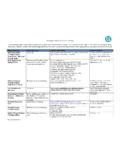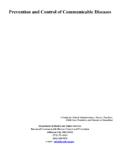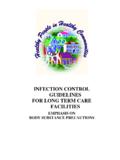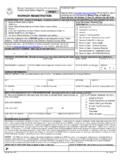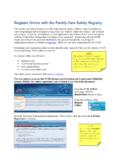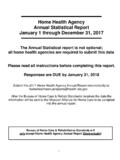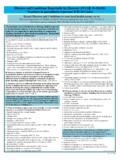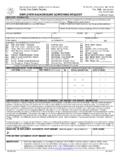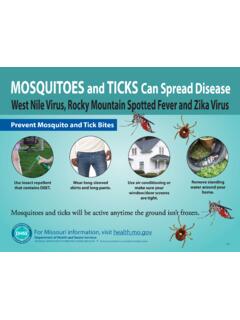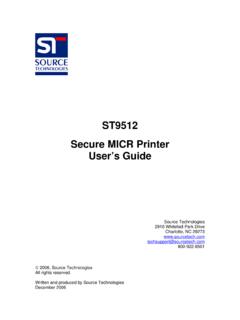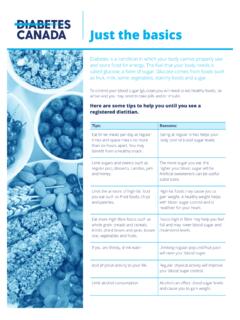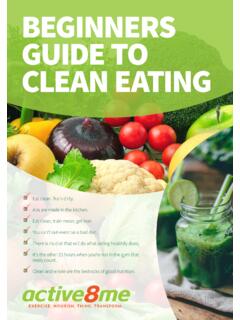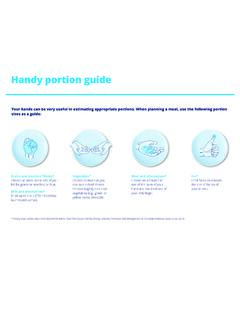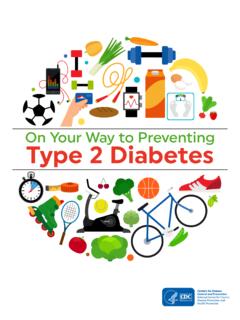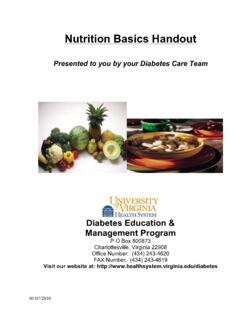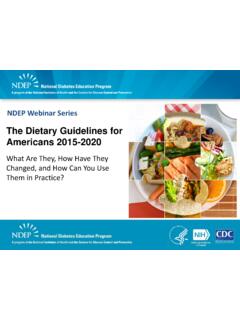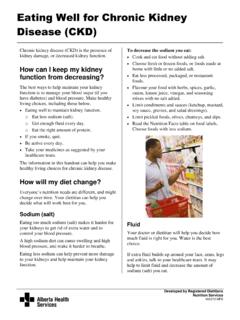Transcription of School Nurse Interventions to Promote Healthy Weight
1 Resource Guide School Nurse Interventions to Promote Healthy Weight BACKGROUND. ASSESSMENT AND. REFFERALS. WORKING WITH FAMILIES. RESOURCES. Missouri Department of Health and Senior Services Acknowledgments Adapted from Childhood Obesity: School Nurse Toolkit Developed by Rebecca Cartmill, MSN, RN. University of Missouri School of Nursing Capstone Project April 2014. School Nurse Toolkit: Student Overweight/Obesity Iowa Department of Public Health Bureau of Nutrition and Health Promotion Nutrition and Physical Activity Program Fall 2011. This resource manual was reviewed and revised based on valuable input from the following Missouri School nurses: Debra Cook, RN, Kennett School District Katherine Park, MSN, RN, Parkway School District Barbara Brommelhorst, MSN, RN, Wentzville School District Dianne Herndon, RN, Retired Patti Kamp, RN, Meadow Heights School District Priscilla Dickerson, RN, Mt Vernon School District Pat Sturges, BSN, RN, Sedalia School District Further input and recommendations were received from Ellen Barnidge, PhD, MPH, Saint Louis University and Constance Brooks, PhD, PMHCNS-BC, PHCNS-BC, Retired University of Missouri Columbia.
2 Reviewers and Advisors: Stacey White MSN, RN, and her sons Dallas White, Jack White and Austin White June 2015. Missouri Department of Health and Senior Services Bureau of Community Health and Wellness AN EQUAL OPPORTUNITY/AFFIRMATIVE ACTION EMPLOYER. Services provided on a nondiscriminatory basis. School Nurse Interventions for Childhood Obesity 2. TABLE OF CONTENTS. INTRODUCTION 4. SECTION 1: BACKGROUND 5. Childhood Obesity Facts 5. Health Effects of Childhood Obesity 5. Definitions of Overweight and Obesity 6. Risk Factors 6. Prevention 7. SECTION 2: ASSESSMENT AND REFERRAL 8. Assessment 8. Protocols to Assure Privacy 8. Nurse /Student Conference 9. Referral 10. Opportunities for Prevention SECTION 3: WORKING WITH STUDENTS AND FAMILIES 12.
3 Motivational Interviewing 12. Self-Reflection 12. Motivational Interviewing Principles 13. Signs of Readiness and Key Questions 16. Motivational Interviewing Algorithms 17. Types of Interviews 19. Sample Dialogue of a Brief Negotiation for Weight Management 21. Measuring Progress 23. SECTION 4: RESOURCES 24. Example BMI Percentile Chart for Boys 2-20 Years of Age 24. Example BMI Percentile Chart for Girls 2-20 Years of Age 25. Example of Plotting BMI on Percentile Chart 26. Screening Tool Blood Pressure Values Requiring Further Evaluation 27. Healthy Lifestyle Questionnaire 28. Sample Lifestyle Questions 29. Example of Weight Management Intervention Plan 30. Pediatric Weight Management Tips for Getting Started 32.
4 Promoting Healthy eating for Children and Adolescents 33. Promoting Physical Activity in Children and Adolescents 34. Sample Individualized Health Plan (IHP) 35. Internet Resources for School Nurses Addressing Overweight and Obesity 37. REFERENCES 42. School Nurse Interventions for Childhood Obesity 3. INTRODUCTION. According to the World Health Organization (WHO, 2012), childhood obesity is one of the most significant health problems of the 21st century. The dramatic rise of childhood obesity and the serious health consequences associated with it cannot be overemphasized. Healthy People 2020. has identified nutrition and Weight status as topic areas of concern and developed specific goals aimed at reducing the number of children and adolescents who are obese ( Department of Health and Human Services [USDHHS], 2011).
5 The Healthy People documents, issued in ten-year increments, are considered to be blueprints for addressing the nation's health. The documents identify the most pressing health concerns for the coming decade and identify strategies to address them. Many are problems that can be addressed through early Interventions in School settings. More than 95 percent of our children are enrolled in schools and are spending up to 13 years of their lives there. Schools and School nurses are in a key position to address this issue and advocate for children and adolescents who are, or are at risk, of becoming obese. This resource kit will: Identify tools for assessment of the child and the School environment. Provide resources for the School Nurse to educate and advocate for students who are overweight or obese.
6 Identify resources to Promote Healthy diet and physical activity habits in all children. The School Nurse can use this guide as a resource when looking for ways to assist students, who are overweight or obese, and their parents. School staff can be educated regarding their role in promoting Healthy eating habits and increasing the level of physical activity in the School setting. School Nurse Interventions for Childhood Obesity 4. SECTION 1: BACKGROUND. CHILDHOOD OBESITY FACTS. Obesity is now the number one health concern among parents in the United States; it is more concerning to them than smoking or drug More than 12 million American children and adolescents ( percent) are obese; and more than 23 million are either obese or overweight ( percent).
7 2 Overall, childhood obesity rates have tripled in the past 30 years. Based on 2011- 2012 national data; percent of 2-5 year olds, percent of 6-11 year olds and percent of 12-19 year olds were obese. While the national statistics are staggering, Missouri rates are equally alarming with 28 percent of 10-17 year olds being overweight or Furthermore, the most at-risk for disease and disparity, Missouri's low income 2-5 year olds, have a percent rate of Research studies have consistently demonstrated that youth who are overweight or obese have substantially higher odds of remaining obese in adulthood. This sets up a potential lifetime of disease, diminished quality of life and disability; therefore, reversing this trend with effective obesity prevention strategies and evidence-based treatment services is critical to the health of our children.
8 HEALTH EFFECTS OF CHILDHOOD OBESITY. Childhood obesity has both immediate and long-term effects on health and well-being. Immediate health effects include higher likelihood of having: High blood pressure and high cholesterol, which are risk factors for cardiovascular disease. Seventy percent of obese youth had at least one risk factor for cardiovascular disease. Pre-diabetes or a high risk for development of diabetes. Bone and joint problems. Breathing problems such as asthma and sleep apnea. Fatty liver disease, gallstones and gastro-esophageal reflux. Social and psychological problems. Long-term health effects include: More severe obesity as an adult if overweight as a child. Higher likelihood of having adult health problems such as heart disease, type 2.
9 Diabetes, stroke and osteoarthritis. Higher risk of being diagnosed with cancer, such as multiple myeloma and Hodgkin's lymphoma. Source: School Nurse Interventions for Childhood Obesity 5. DEFINITION OF OVERWEIGHT AND OBESITY. Body mass index (BMI) is a measure used to determine childhood overweight and obesity. It is calculated using a child's Weight and height. BMI does not measure body fat directly, but it is a reasonable indicator of body fatness for most children and teens. A child's Weight status is determined using an age- and sex-specific percentile for BMI rather than the BMI categories used for adults, because children's body composition varies as they age and varies between boys and girls.
10 Centers for Disease Control and Prevention (CDC) Growth Charts are used to determine the corresponding BMI for age and sex percentile. For children and adolescents (2-19 years of age): Overweight is defined as a BMI at or above the 85th percentile and lower than the 95th percentile for children of the same age and sex. Obesity is defined as a BMI at or above the 95th percentile for children of the same age and sex. Samples of the growth charts are included in the resource section. RISK FACTORS. Childhood obesity is the result of eating too many calories and not getting enough physical activity. Many factors contribute to overweight/obesity; however, environmental factors and societal norms have made it difficult for most Missourians to practice behaviors that support a Healthy Weight .
